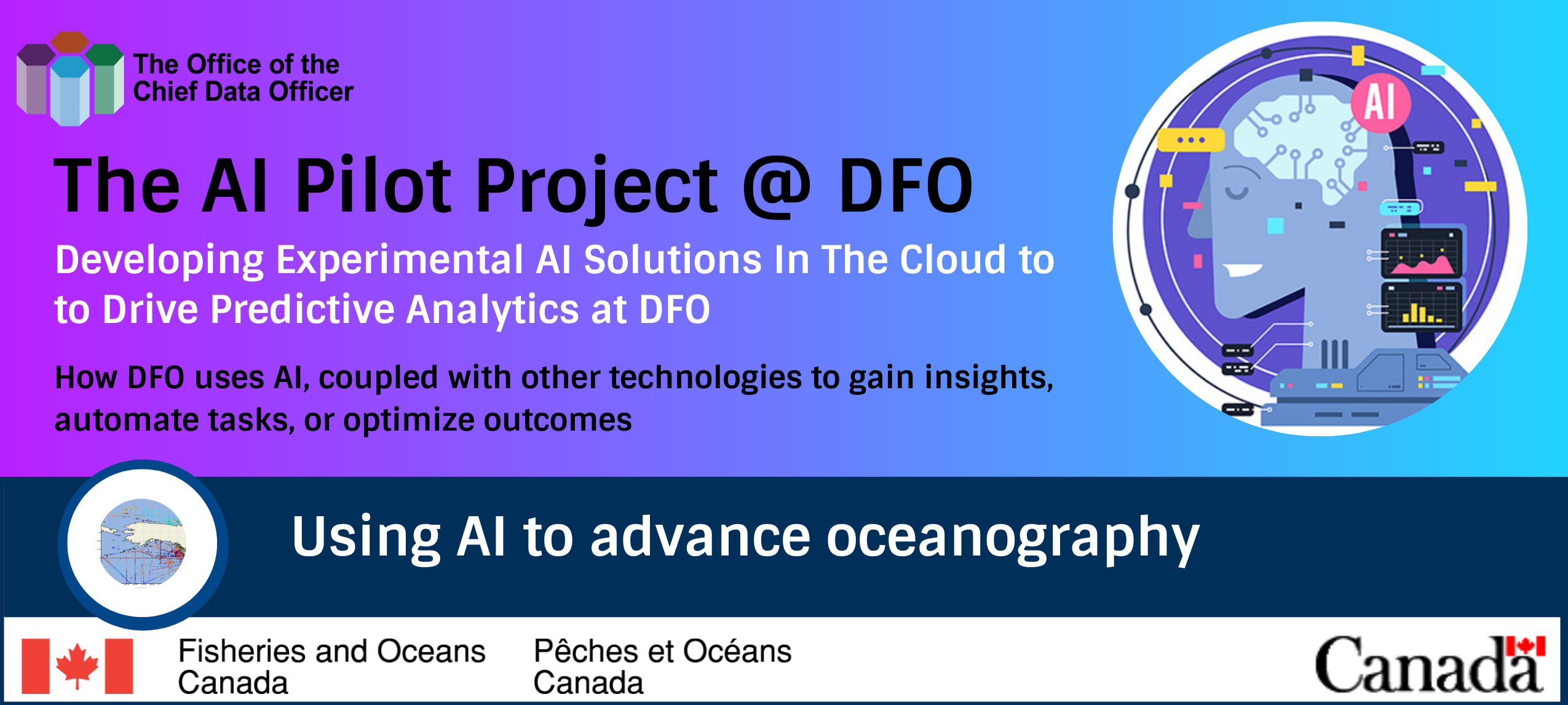Using AI to advance oceanography
AI can provide a data-driven approach to analyzing ocean data. DFO has developed a predictive model to sift through the data piles of ocean data to find (dis-)similarities between multidimensional profiles of oceanographic data. The insights gained from the model can be used to answer any questions about dynamic changes in our oceans.
The Challenge
The Department of Fisheries and Oceans (DFO) Canada has been surveying Canada’s oceans to monitor the evolution of Canada’s oceans, as well as to perform scientific research. The department frequently collects ocean observations using in situ measurements. Ocean data is considered multidimensional data where ocean observations are collected at different depths of the ocean. The amount of ocean data and data dimensions are rising sharply. Scientists tried to use simulations to simulate the ocean environment. However, ocean simulation models don’t reflect the complex relationship between the different ocean observations. Moreover, current traditional ocean data analysis mostly uses manual classification and recognition. This can be resource-intensive, time-consuming, and requires a specific kind of expertise.
The Solution
Data-driven analysis approaches are better suited for such type of analysis. AI has the ability to sift through the data piles of ocean data to find the complex relation between the ocean observations.
Supported by the 2020 – 2021 Results Fund, a Proof of Concept (POC) was developed for a predictive model to find (dis-)similarities between in situ multidimensional profiles of oceanographic data of the Pacific Ocean. The in situ Conductivity-Temperature-Depth (CTD) profiles are classified using the profile classification model [3]. The ocean profile classification model allows to automatically assemble ocean profiles in clusters according to their vertical structure similarities. The geospatial properties of these clusters can be used to address a large variety of oceanographic problems, E.g. front detection, water mass identification, natural region contouring (gyres, eddies), reference profile selection for QC validation, etc. The vertical structure of these clusters furthermore provides a highly synthetic representation of large ocean areas that can be used for dimensionality reduction and coherent intercomparisons of ocean data (re)-analysis or simulations [3].
We have applied the predictive model to cluster a total of 3602 CTD profiles, according to their temperature value only, where the final data point is less than 1,000 dbar. Results have shown that the dataset of temperature profiles contains 9 groups of vertically coherent heat patterns, or classes. Each of the temperature profile classes reveals unique and physically coherent heat distributions along the vertical axis. When mapped in space, each of the 9 classes is found to define an oceanic region, even if no spatial information was used in the model determination. The model is also able to show natural phenomenas such as ocean inlets, shown as purple observations in the figure below.
In addition, there is a posibiliy of identifying anomlous profiles by examing how much an ocean profile deviate from its own cluster. In the figure below, results have shown that there is a total of 4 profiles that may be anomalous. Those identified profiles belon to clusters 0, 4, and 6.
In the end, the insights gained from the model can provide ocean scientists with a data-driven tool to analyze ocean data.
References
- ↑ https://argo.ucsd.edu/about/
- ↑ Guillaume Maze et al, Coherent heat patterns revealed by unsupervised classification of Argo temperature profiles in the North Atlantic Ocean, Progress in Oceanography, Volume 151, 2017, Pages 275-292.
- ↑ 3.0 3.1 https://pyxpcm.readthedocs.io/en/latest/index.html
